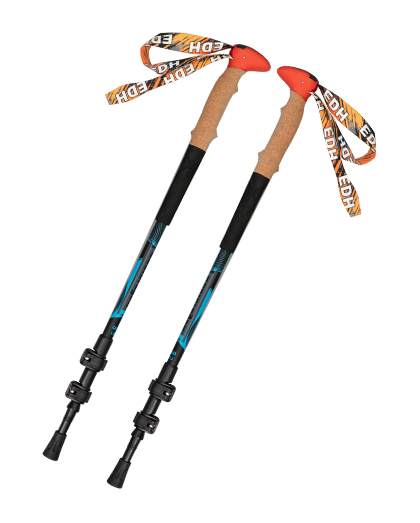

Ski poles, also known as poles, are essential skiers' tools for propulsion and balance. Modern ski poles are usually made of graphite and titanium, although materials like bamboo and carbon fibre are also used. Ski poles are often used in freestyle and alpine skiing. Alpine skiers use ski poles in cross country skiing and in shorter runs up the side of a mountain. Alpine skiers usually have longer ski poles, compared to those used in other sports.
Most modern day poles come with an industry standard size that enables the user to place them on most major ski slopes. Ski pole sizing can be broken down into three categories, namely Small/XSmall, Medium/Small, and Large/Xlarge. This sizing system is based on the width of the ski pole itself, which is in turn dependent on the type of skiing (free, alpine, etc.) The reason for the industry standard size is so that it is easier for the consumer to place a ski pole on slopes that are not very wide.
There are some exceptions to the sizing system. In situations where extreme width is required, such as on steep and monstrous slopes, manufacturers may have developed a few extra features to assist the consumer in achieving a proper grip. They may cut the ski pole length to a precise length. Or, they may provide a slightly larger grip size, to allow greater control when using the poles. When shopping for grip poles, it is important to be aware of the fact that the size of your ski pole is only one of several measurements that are taken during the fitting process.
Many poles have various types of fittings. There are cheek grips (where the whole pole is gripped), a thumb grip, a fingerless grip (where the entire pole is gripped with only the fingertips), and a wrist strap. Fitting different grips is a simple way to customize the experience. Some ski poles come with removable fingerless grips, allowing increased dexterity when using the pole.
Today's aluminum and carbon fibers offer superior performance in all areas of sport equipment. In addition, these materials are light-weight, so fitting is a breeze. They are also increasingly resistant to abrasion and rust, making them suitable for a range of outdoor sports. The carbon fiber ski poles are usually constructed from a single piece of material, using a laser cut and imprinted shape. The carbon fiber and aluminum are bonded together through a process of heat fusion. Afterward, the two materials are joined by welding, forming a smooth, durable part.
Carbon and aluminum are great materials, but each also has its drawbacks. The best grip is obtained with ski poles that use either double-layer fiberglass or a combination of carbon and aluminum. Most downhill ski poles will also have specially designed grips made from either fiberglass or aluminum. Specialized carbon fiber grips provide increased sensitivity to prevent "bar bellying," a common tendency to pull your hands into the lapels.
